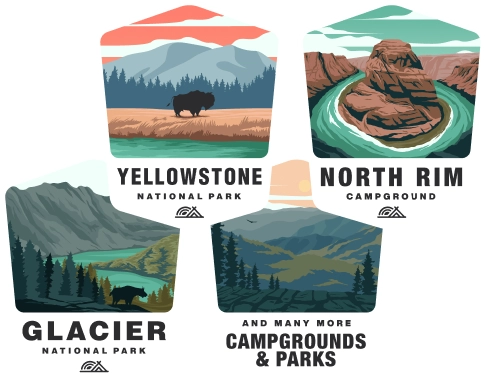Camping at Inyo National Forest
Overview of Inyo National Forest
Inyo National Forest is a vast expanse of public land in California that spans over two million acres, including parts of the Eastern Sierra Nevada and the White Mountains. Known for its stunning landscapes, the forest is home to the Ancient Bristlecone Pine Forest, Mt. Whitney (the highest peak in the contiguous United States), and spectacular alpine lakes.
Permits and Regulations
Backcountry Permits: Most overnight trips into the wilderness areas within Inyo National Forest require a backcountry permit. This includes hikes to Mt. Whitney and trips into the John Muir and Ansel Adams Wildernesses. Permits can be reserved online in advance or obtained on a first-come, first-served basis at visitor centers.
Campfires: Due to the risk of wildfires, campfire restrictions are often in place, especially during the dry summer months. Check current restrictions before your trip. You may need to use portable stoves for cooking.
Food Storage: To protect wildlife and your food supply, proper food storage is mandatory in the Inyo National Forest, particularly in bear country. Bear-proof containers are often required when camping in the backcountry.
Camping Options
Developed Campgrounds: Inyo National Forest offers a variety of developed campgrounds suitable for tents, RVs, and trailers. Some can be reserved in advance, while others are first-come, first-served.
Dispersed Camping: Dispersed camping (camping outside of developed campgrounds) is permitted in many areas of the forest, but regulations vary. Make sure to follow Leave No Trace principles and adhere to any posted guidelines.
Group Camping: For large parties, group campsites are available and can be reserved. Check the specific group size limitations and amenities before booking.
Weather and Safety
Weather Considerations: The weather in the Eastern Sierra can change rapidly, and high-altitude conditions can be severe, even in summer. Prepare for cold temperatures at night and the possibility of thunderstorms.
Altitude Sickness: Altitude sickness can be a concern, especially for those who are not acclimated. Take it easy at first if you are not used to high elevations.
Wildlife Encounters: Be bear aware and know how to store food and act responsibly to reduce the chance of an encounter.
Recreation and Activities
Hiking: Inyo National Forest offers a range of hiking trails for all skill levels, from easy walks to challenging climbs.
Fishing: The lakes and streams are popular for trout fishing. Make sure to have a valid California fishing license.
Climbing: The Eastern Sierra is known for excellent rock climbing and bouldering, with famous spots like the Buttermilks near Bishop.
Winter Sports: In winter, visitors can enjoy skiing, snowboarding, and snowshoeing at Mammoth Mountain and other locations.
Access and Visitor Centers
Accessibility: Parts of the forest are accessible year-round, but some areas, especially the high passes, are closed during the winter due to snow.
Visitor Centers: Stop by one of the visitor centers for maps, current conditions, permits, and local advice. Some notable centers include the Eastern Sierra Visitor Center and the White Mountain Ranger Station.
Environmental Consideration
Conservation: Due to the delicate nature of the ecosystems within Inyo National Forest, it's crucial to practice Leave No Trace principles, like packing out all trash and minimizing your impact on the land.
Travel Responsibly: Stay on designated roads and trails to prevent erosion and habitat destruction.
Fire Safe: Follow all guidelines for campfires and use fire-safe practices to prevent wildfires.
By following these guidelines and respecting the natural beauty of Inyo National Forest, you can ensure a safe and enjoyable camping experience while helping to preserve this remarkable landscape for future generations.
